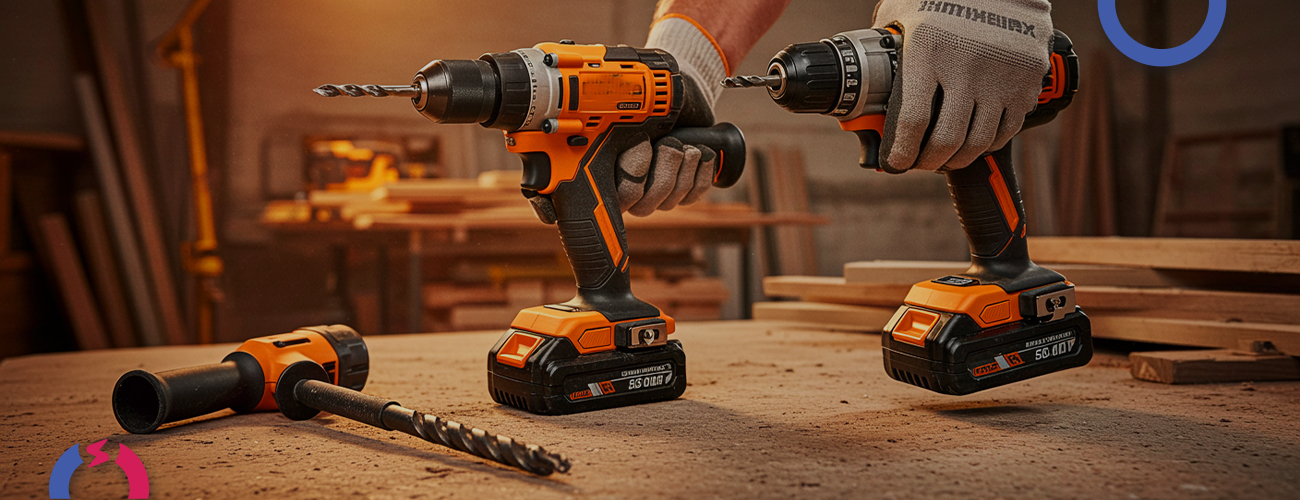Cordless tools have revolutionized the way both professionals and DIY enthusiasts approach tasks in various fields, from construction to home improvement. With no cords to limit movement, cordless tools provide unmatched flexibility and convenience, allowing users to work anywhere without being restricted by power outlets. As technology continues to improve, cordless tools are becoming more powerful and efficient, making them essential additions to any toolkit.
What Are Cordless Tools?
Cordless tools are powered by rechargeable batteries rather than being plugged into a power source. This gives them significant advantages in terms of mobility, as users are no longer tied down by the need for an electrical outlet. These tools include drills, saws, impact wrenches, and sanders, among others, and are often found in both professional settings and home workshops.
Types of Cordless Tools:
-
Cordless Drills: One of the most popular cordless tools, the cordless drill is a versatile piece of equipment used for drilling holes and driving screws. It’s ideal for both light and heavy-duty tasks, such as assembling furniture or installing fixtures.
-
Cordless Saws: Cordless saws, including jigsaws, circular saws, and reciprocating saws, offer portability without sacrificing cutting power. They are used for cutting wood, metal, plastic, and other materials and are perfect for tasks that require flexibility and ease of movement.
-
Cordless Impact Wrenches: These tools are designed to loosen or tighten bolts and fasteners with high torque. They are widely used in automotive repair, construction, and assembly work, providing fast, powerful results.
-
Cordless Sanders: These are used for smoothing surfaces or removing finishes from wood, metal, or plastic. Cordless sanders offer the convenience of portability while still providing a consistent finish, making them ideal for woodworking and renovation projects.
-
Cordless Grinders: Cordless angle grinders are used for grinding, cutting, and polishing various materials. The portability of cordless grinders makes them suitable for tasks in tight spaces or when working outdoors, where access to power outlets is limited.
-
Cordless Vacuum Cleaners: Ideal for quick cleanup tasks, cordless vacuums are great for cleaning small workspaces or job sites. They provide portability and flexibility without the hassle of cords.
-
Cordless Hedge Trimmers and Lawn Mowers: These tools make yard work easy and convenient, as they eliminate the need for long extension cords and provide a portable solution for maintaining gardens and lawns.
-
Cordless Nail Guns: Cordless nail guns are widely used in carpentry and construction for driving nails quickly and efficiently. These tools are perfect for framing, roofing, and other tasks requiring speed and precision.
-
Cordless Screwdrivers: These are ideal for driving screws in a variety of materials. Their compact size and ease of use make them excellent for small assembly tasks or even larger projects that require consistent screw driving.
Advantages of Cordless Tools:
-
Portability: Cordless tools are incredibly portable, allowing users to work anywhere without being confined to a location with an electrical outlet. This makes them ideal for outdoor projects, remote job sites, or working in tight spaces.
-
Convenience: With no cords to worry about, users can move freely and comfortably, improving efficiency and reducing the time spent setting up or moving equipment.
-
Increased Flexibility: Cordless tools give users the flexibility to work on projects of various sizes and in different locations, whether it’s building a deck outside or working on a car in the garage.
-
Ease of Use: Cordless tools are typically lighter and more compact than their corded counterparts, making them easier to handle, especially for extended periods. This is particularly beneficial when working in confined spaces or for detailed tasks.
-
Improved Technology: With advancements in battery technology, modern cordless tools have become just as powerful as corded tools, offering similar performance levels without the restrictions of a power cord.
How to Choose the Right Cordless Tool:
-
Battery Life: Battery life is one of the most important considerations when choosing a cordless tool. Opt for tools with long-lasting batteries to ensure you can complete your tasks without frequent recharging interruptions.
-
Voltage: The voltage of the tool determines its power. Higher voltage tools tend to be more powerful and suitable for heavy-duty tasks, while lower voltage tools are better for lighter tasks like assembling furniture or hanging pictures.
-
Ergonomics: Look for tools that are comfortable to use and easy to handle. Features like rubber grips, adjustable handles, and lightweight designs can make a big difference in reducing strain during extended use.
-
Power and Speed: The power of a cordless tool determines how well it can perform tasks such as drilling or cutting. Look for tools with variable speed settings to give you more control over your work.
-
Durability and Build Quality: Choose tools made from high-quality materials to ensure they can withstand frequent use and rough conditions. Durability is especially important for professional-grade tools.
-
Brand Reputation: When buying cordless tools, consider the reputation of the manufacturer. Brands with a long history of making reliable, high-quality tools tend to offer better performance and longer warranties.
Maintenance Tips for Cordless Tools:
-
Battery Care: Always fully charge and discharge the battery to extend its lifespan. Avoid overcharging or leaving the tool unused for long periods.
-
Clean Regularly: Keep the tool clean and free of debris. Regularly wipe down the tool and check for any build-up of dust, dirt, or material residues that may affect performance.
-
Lubricate Moving Parts: Periodically lubricate the moving parts of the tool, such as the chuck or motor components, to keep them running smoothly and prevent wear and tear.
-
Inspect for Damage: Check the tool regularly for any signs of damage, such as cracks, loose screws, or malfunctioning parts. Address any issues promptly to avoid further damage or safety hazards.
-
Store Properly: Store cordless tools in a dry, cool place to prevent corrosion or battery damage. Use toolboxes or hanging organizers to protect the tool from physical damage.
Conclusion:
Cordless tools provide the freedom and flexibility that professionals and DIY enthusiasts need to work efficiently and comfortably. Whether you are drilling, cutting, sanding, or cleaning, these tools allow you to move freely and tackle tasks in various environments without the hassle of cords. With advancements in battery technology, cordless tools have become as powerful as their corded counterparts, making them indispensable for anyone working on home improvement, construction, or automotive projects.


